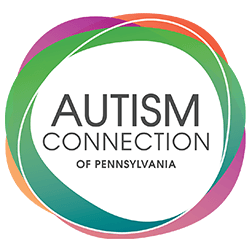Carnegie Museum of Natural History’s Sensory Friendly Evening: Camp Out
Sensory Friendly Evening: Camp Out
Friday, June 14
6:00-9:00 p.m.
Head to Carnegie Museum of Natural History for a sensory-supportive evening campout, no sleeping bag or tent required! Read seasonal stories around the faux campfire and explore nighttime nature with some live animal ambassadors. Museum galleries will reopen for this event after the museum has closed to the general public and will have reduced audio/visual elements, and calming spaces with support materials.
Visit the Carnegie Museum of Natural History website for more information!
Posibilidades Infinitas Virtual Autism Support Group
A free virtual support group for families and people on the spectrum from different communities. Families will share their experiences and have different topics, presenters and activities.
Meetings are the first and third Thursday of every month from 5:00 – 6:30 pm.
They also offer various free services to the Latino community in Pennsylvania.
The registration link for the Zoom meetings changes with each meeting. The easiest way to register for meetings is to contact [email protected] or call (267) 339-9872.
Grupo de Apoyo Virtual Para Familias e Individuos en el Spectrum para diferentes comunidades. Compartiremos nuestras experiencias, tendremos diferentes tópicos, presentadores y actividades.
Cuando: Primer y tercer jueves de cada mes @ 5pm-6:30pm
Posibilidades Infinitas Virtual Autism Support Group
Three Rivers Community Care Summer Kickoff
- Live Music
- Crafts
- Community Resources
- Yard Games
- Sensory Room
- And More!
Child Health Association of Sewickley Grant: Spelling
We are glad to share that Autism Connection of Pennsylvania has been granted the opportunity to further our mission of being a lifeline and hub for families and adults in the autism community. With heartfelt gratitude, we announce that we have been awarded a grant of $10,000 by the Child Health Association of Sewickley.
We believe in leaving no member of our community behind. Our organization is disability-led, with a passionate team that includes three autistic board members, and 33% of our staff is autistic. We serve people and families from infancy through older adulthood, with a goal that
everyone receives the support, information, and advocacy they deserve.
This grant is a testament to our commitment to inclusivity and accessibility. With these funds, we will embark on a project aimed at supporting people who are nonspeaking or minimally verbal, hoping to help them communicate their needs and wants—often for the first time.

Here’s a glimpse of what this project entails.
Project Goals
- Link families who have had success with spelling to access academic, social, and healthcare needs
- Engage families in dialogue with newcomers for whom traditional speech and language services are not sufficient
- Emphasize the concept of presuming understanding on the part of nonspeaking autistic young people and promote literacy from a young age
- Educate caregivers about autism brain differences that affect spoken communication
- Encourage families to explore new communication methods with support from experienced practitioners
Measurement of Success:
- Number of new families introduced to spelling for accessing various needs
- Number of families using spelling with some success
- Engagement of professionals in training sessions
- Distribution of spelling boards at no cost
- Involvement of families, teachers, and therapists in implementing spelling
This project aligns with our core values of inclusivity, accessibility, and support. We are dedicated to making a tangible difference in the lives of nonspeaking autistic people and their families, ensuring that communication barriers do not hinder their access to healthcare, education, and social engagement. Together, we can break down barriers and create a more inclusive world for people with autism who need access to communication.
Thank you for being a part of our journey.






